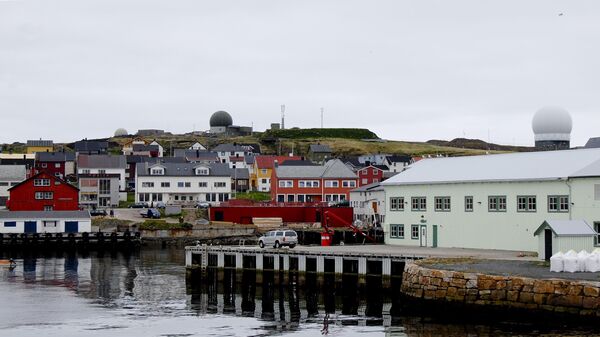In an article published in the magazine Luftled, Michael Mayer, a senior fellow the Norwegian Defense Research Institute and a PhD at the University of Oslo, claimed Vardø to be an ideal location for discovering and following missiles in northern Europe, especially missiles launched across the North Pole against the US. Mayer therefore argued that a missile radar in Vardø would be a "logical choice."
Mayer also suggested that the Globus III may belong to the same radar type as Ground Based Prototype, GBR-P, located on the Pacific Kwajalein atoll. The GBR-P has been previously used in tests in connection with the US missile shield, he pointed out.
"If that were the case, Norway's contribution to US territorial defense would be so substantial (at least until the possible construction of a new ground-based radar on the US east coast) that any additional European contribution would be superfluous," Mayer argued.
Over the past year, dozens of concrete trucks have been shuttling between concrete stations throughout Finnmark county in northern Norway and a construction site inside a fenced-off area with strict security measures, Norwegian national broadcaster NRK reported. While the Norwegian intelligence service previously assured the public that the new radar would be much smaller than the existing Globus II, the construction work has shown that the radar will probably be at least as high. With several floors located underground, the new facility has been estimated to have 15 floors, a rarity in Arctic Norway.
READ MORE: Norway and US Busted Hacking Russian Networks to Gain Data on Leadership
Former commodore Jacob Børresen has argued against Norway's participation in the global missile shield, arguing it could increase the threat of a nuclear war.
Liv Signe Navarsete, a member of the parliamentary defense committee and the leader the Center Party's parliamentary group, previously argued that Norway's participation in the missile shield would damage Norway's relations with Russia. In saying so, she was supported by Socialist Left Party defense spokesman Bård Vegar Solhjell, the daily newspaper Klassekampen reported.
The Russian Embassy in Norway previously stated the missile defense being built by the US and NATO, including Norway, could lead to problems in the North and undermine strategic stability, with catastrophic consequences in Europe andthe world as a whole.
READ MORE: Angry Norwegians Wrangle Over US Radar Jamming TV Signals
The Norwegian Defense Ministry, however, firmly has rejected a connection between the new radar in Vardø and global missile defense.
"The system is not technically relevant for missile defense, among other things because there is no data transfer in real time," Defense Ministry press officer Lars Gemble said.
The radars in Vardø are a long-standing collaboration between the US Air Force Space Command and Norway's Intelligence Service. Globus III will replace the 1988 US radar Globus I and will work jointly with Globus II. The cost of Globus III has been estimated at NOK 10 billion ($1.2 billion). It is expected to become operational in two years and will be under US command.
READ MORE: Norway Shelves Decision to Join NATO's Missile Shield


